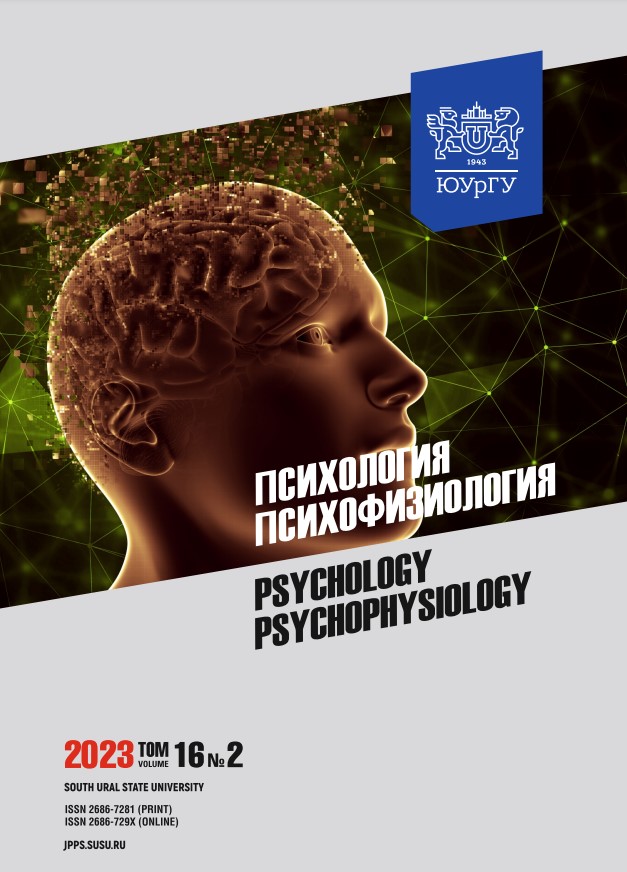Sex correlations between the components of temperament in medical university students
Abstract
Introduction. A number of researchers share the opinion that temperamental traits are stable determinants of personality. The literature presents research results indicating the plasticity of temperamental traits depending on type, gender, age, and ethnicity. The issue of sex-related characteristics of temperament is of particular interest. Gender differentiation reflects the development of individuality, the typological characteristics of a person, as well as formal aspects of activity directly related to the properties of the nervous system. The information presented in the literature on these issues is multidirectional. Aims. This paper aims to identify the features of social and subject activity in male and female medical students by means of correlation analysis. Materials and methods. The structure of temperament was defined in 135 male and female students with the V. Rusalov questionnaire. During statistical processing, the average values were obtained, as well as their differences in the groups of subjects. A correlation analysis was performed with the calculation of rectilinear correlation and the coefficient of multilateral correlation.
Results. The results obtained showed the prevalence of the emotional component in female individuals. Rectilinear correlations between the scales of the questionnaire, both positive and negative, allowed us to identify the role of plasticity in subject activity and the alignment of communicative processes with arbitrary activity in men. Conclusion: In women, the structure of correlations between scales showed a different system of control of purposeful activity that resulted from the emotional sphere. This can probably lead to decreased effectiveness in achieving adaptive results.
Downloads
References
2. Kamenskaya V.G., Alekseeva E.E. Properties of the nervous system and temperament in the structure of individual typological characteristics of a person. Vestnik Sankt-Peterburgskogo universiteta MVD = Bulletin of the St. Petersburg University of the Ministry of Internal Affairs. 2010;1(45):202–209. (in Russ.).
3. Kiselev V.V., Novikova N.N. Individual psychological features of the development of adolescent athletes in specialized sports classes (on the example of football players' training). Chelovecheskii capital = Human capital. 2017;3(99):59–61. (in Russ.).
4. Gryazeva-Dobshinskaya V.G., Dmitrieva Yu.A., Korobov S.Yu. Hemispheric asymmetry and the structure of stress resistance resources of integral individuality. Vestnik Yuzhno-Uralskogo gosudarstvennogo universiteta. Seriya «Psikhologiya» = Bulletin of the South Ural State Univer-sity. Series Psychology. 2018;11(2):15–27. (in Russ.). DOI: https://doi.org/10.14529/psy180202
5. Berezutskaya O.S. Temperamental properties of student youth. Akademicheskaya publitsistika = Academic journalism. 2021;3:379–381. (in Russ.).
6. Savchenkov Yu.I., Petrosyan E.Yu. On the question of plasticity of temperament properties. Sibirskii psikhologicheskii zhurnal = Siberian Psychological Journal. 2009;32:46–51. (in Russ.).
7. Rusalov V.M. On the nature of temperament and its place in the structure of individual personality traits. Voprosy psikhologii = Questions of psychology. 1985;1:19–32. (in Russ.).
8. Raufov S.S. Gender features of traits and temperament structures of Tajiks. Vostochno-Evropeiskii nauchnyi zhurnal = East European Scientific Jornal. 2018;3(31):57–61. (in Russ.).
9. Rusalov V.M. Measurement of human temperament. Psikhologicheskii zhurnal = Psychological journal. 1992;13(2):36–38. (in Russ.).
10. Petrosyan E.Yu., Savchenkov Yu.I. Sexual and typological features of the temperament structure. Sibirskii meditsinskii zhurnal = Siberian Medical Journal. 2005;51(2):57–60. (in Russ.).
11. Groshev I.V., Davydova Yu.A., Zaguzova T.A. Sexual differences of temperamental personality traits Sotsialno-ekonomicheskie yavleniya i protsessy = Socio-economic phenomena and processes. 2007;4(008):23–31. (in Russ.).
12. Groshev I.V. Sexual differences in the manifestations of temperament properties Vestnik RUDN. Seriya “Psikhologiya i pedagogika” = Bulletin of the RUDN, Psychology and Pedagogy series. 2004;2:170–177. (in Russ.).
13. Rusalov V.M Gender and temperament. Psikhologicheskii zhurnal = Psychological jour-nal. 1993;14(6):55–64. (in Russ.).
14. Biryukov S.D. Psychogenetic study of plasticity as a temperament trait. Psikhologicheskii zhurnal = Psychological journal. 1992;13(5):64–71. (in Russ.).
15. Kolosnitsyna M.Yu. The main directions of the study of integral individuality in Russian psychology. Vestnik Moskovskogo gosudarstvennogo lingvisticheskogo universiteta = Bulletin of the MGLU .2014;16(702):110–127. (in Russ.).
16. Demets E.G., Meshcheryakova I.N. Interrelation of features of temperament and strategy of behavior of students in a situation of interpersonal conflict. Problemy sovremennogo pedagogicheskogo obrazovaniya = Problems of modern pedagogical education. 2018;58-4:305–310. (in Russ.).
17. Orlova D.G. The influence of the effect of psychological well-being on the structure of the integral individuality of the student. Obrazovanie i nauka = Education and Science. 2017;19(6):119–137. (in Russ.).
18. Martynenko O.V. Kiseleva A.A. Features of interrelation of value orientations and psychodynamic properties in the structure of integral individuality of schoolchildren and students. Psikhologiya i pedagogika: metodika i problemy prakticheskogo primeneniya = Psychology and pedagogy: methodology and problems of practical application. 2013;30:17–23. (in Russ.).
References on translit
-Copyright (c) 2023 Psychology. Psychophysiology

This work is licensed under a Creative Commons Attribution-NonCommercial-NoDerivatives 4.0 International License.



